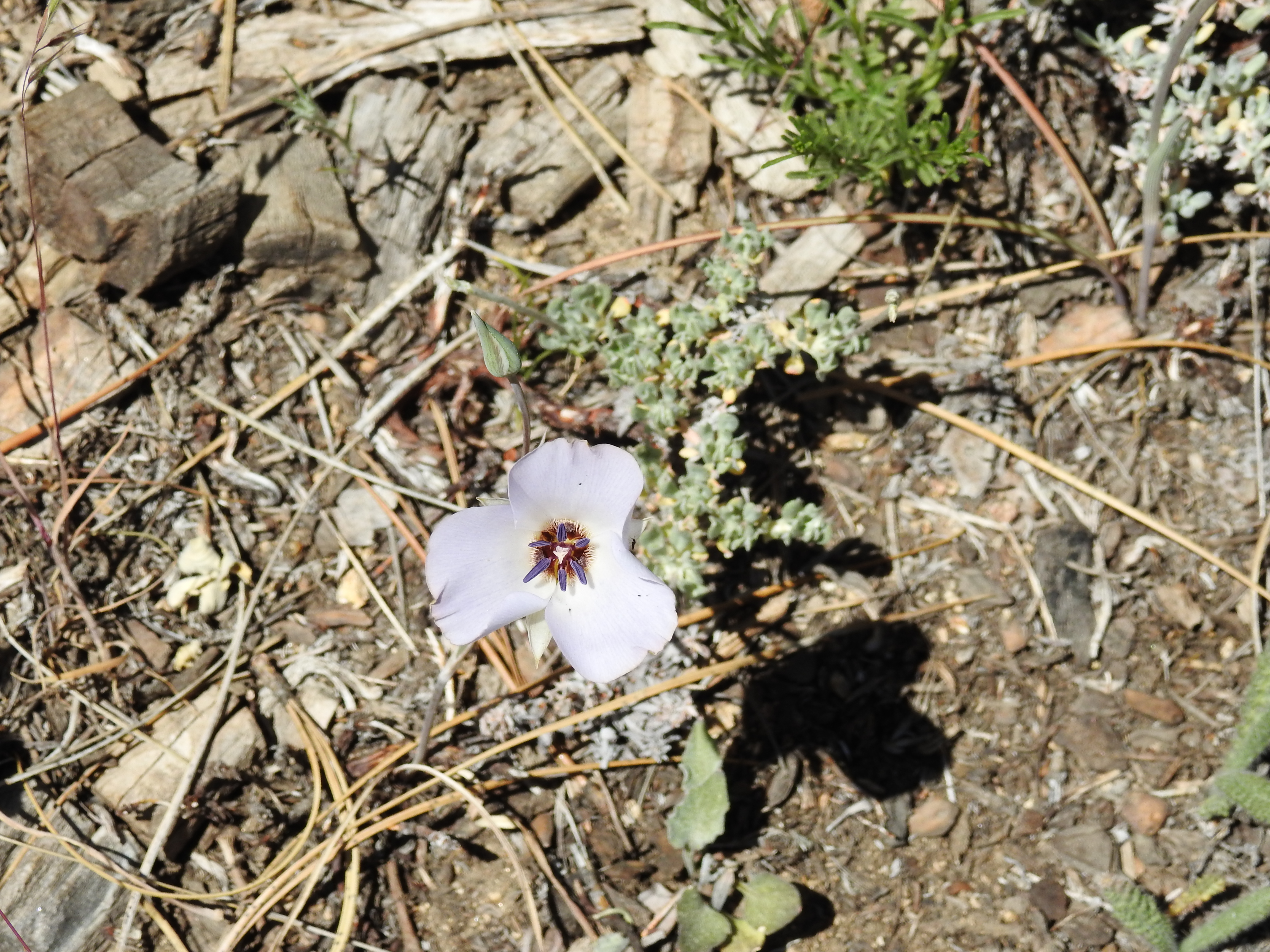Bruneau mariposa lily
(Calochortus bruneaunis)

Description
Calochortus bruneaunis is a species of flowering plant in the lily family, and is known by the common name Bruneau mariposa lily. The plant is native to the Great Basin and adjacent regions in the Western United States, from eastern California and Oregon to Montana and Utah. It generally grows in dry, Sagebrush steppe habitats. Calochortus bruneaunis is a perennial herb producing a mostly unbranching stem up to 40 centimeters tall. The leaf at the base of the stem is narrow in shape, reaching 10 to 20 centimeters long and withering away at flowering. The inflorescence bears 1 to 4 erect bell-shaped flowers. The pointed sepals and larger, rounded petals are white to lilac-tinted in base color. The sepals are marked with a reddish or greenish spot or streak toward their bases and the petals have a greenish streak on the outer surface and a base of yellow, purple, and red coloration on the inner surface. The fruit is a narrow, angled capsule up to 7 centimeters long. It contains several flat, yellow seeds. Calochortus is a genus of flowering plants in the lily family. The group includes herbaceous, perennial and bulbous species, all native to North America (primarily the Western United States). The genus Calochortus includes mariposas (or mariposa lilies) with open wedge-shaped petals, globe lilies and fairy lanterns with globe-shaped flowers, and cat's ears and star tulips with erect pointed petals. The word Calochortus is derived from Greek and means "beautiful grass". Calochortus flowers have six tepals. Unlike most other Liliaceae, Calochortus tepals are in two series that differ in size and color.The outer three are generally narrower and more sepal-like, while the inner three are larger, usually with bright marks at the base.They may be described as petals. The flowers are borne on a stem that arises from a bulb, generally in the spring or early summer. Flowers can be white, yellow, pink, purple, bluish, or streaked. The insides of the petals are often very 'hairy'. These hairs, along with the nectaries, are often used in distinguishing species from each other.
Taxonomic tree:







